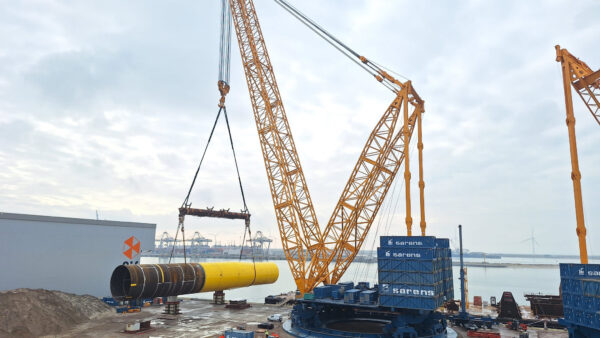
Construction will be an engine of global economic growth in the decade to 2030, with output expected to be 35% higher than in the ten years to 2020, according to a new global forecast.
Pent-up household savings, pandemic stimulus programmes and population growth will combine to spur average annual growth of 3.6% between now and 2030, propelling construction’s expansion ahead of growth in both manufacturing and services, say the authors of “Future of Construction”, a forecast produced by Oxford Economics and Marsh McLennan companies Marsh and Guy Carpenter.
Growth will be concentrated in a handful of countries, with just four – China, India, US and Indonesia – accounting for some 58% of projected global expansion.
However, the forecast contains some surprises, such as growth in UK infrastructure averaging 3.7% a year to rival China as UK mega projects begin.
Graham Robinson, global infrastructure lead at Oxford Economics and the report’s lead author, said it was unusual to see construction outstripping growth in both services and manufacturing over a sustained period.
“But it’s not surprising that construction is expected to power the global economy over this next decade, considering the unprecedented nature of stimulus spending on infrastructure by governments and the unleashing of excess household savings in the wake of Covid,” he added.
Authors say extra output in the decade will amount to $4.5 trillion, giving construction an output worth $15.2 trillion by 2030 and 13.5% of global GDP.
“Huge levels of excess household savings have built up across advanced economies,” said Jeremy Leonard, managing director of industry services at Oxford Economics and an author of the report.
“In North America, we estimate excess savings at well over 10% of GDP. Even under very conservative estimates of how much of this excess savings will be spent, the growth profile across most developed countries will be strong through 2022.”
They said the growth will start this year, with a 6.6% output expansion expected globally in 2021, driven by government stimulus plans such as the $1.2 trillion Bipartisan Infrastructure Bill in the US. Latin America will see nearly double-digit growth this year, the authors said.
By 2030, China and the US will top the global annual output table, but the report predicted shifts in the 2020 status quo. India will be the third-largest, overtaking Japan in 2023, while Indonesia will leapfrog Germany, UK and Japan to become fourth-largest by 2030.
UK will overtake Germany in 2023 and remain sixth-largest as it will be overtaken by Indonesia in 2024.
Meanwhile, the report predicted that permanent inward immigration will drive construction demand across Anglosphere and other developed countries, while growing working-age populations will spur workplace construction and a gradual return to urban centres will result in more multi-family residential construction.
The report noted that climate change and the race to net zero are the greatest challenges for construction, and are expected to drive new deconstruction opportunities while ESG-related capital grew by 28% in 2020, largely due to a flow of fundraising into sustainability-related strategies.
Download the report here.
Comments
Comments are closed.











Good news